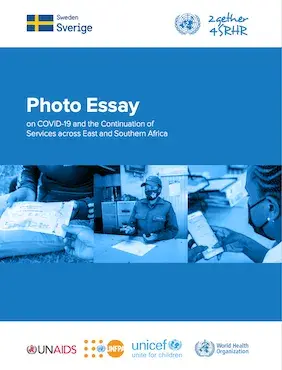When the COVID-19 Pandemic broke out, the first response priorities were to provide health workers with personal protective equipment (PPE), including masks, and diagnostic and therapeutic supplies, and to find new ways to reach and serve the population, especially young people. Read about the innovative ways the programme devised to deliver sexual and reproductive health services during a pandemic.
Following the detection of the first COVID-19 cases in March 2020, governments imposed stringent lockdowns. As cases increased, the pandemic and associated lockdowns threatened to overturn the health gains made over the past two decades. Despite the significant progress made prior to COVID-19, much was at stake, with 16 countries in the region still having maternal mortality rates above 310 per 100,000 live births, HIV accounting for 10 per cent of all deaths and 27 per cent of all new HIV infections occurring amongst adolescent girls and young women (aged 15–24 years).1
The four UN agencies implementing the programme (United Nations Programme on HIV/AIDS (UNAIDS), the United Nations Population Fund (UNFPA), the United Nations Children’s Fund (UNICEF) and the World Health Organization (WHO) ) in collaboration with governments and partners found new ways to ensure that sexual and reproductive health services continued. This photo essay describes some of the innovations that were adopted and are contributing to building back better and more resilient systems.





